How to Choose the Most Popular City in the World?
Table of Contents
1)London City: Most Popular City
A Blend of Modern Marvels and History

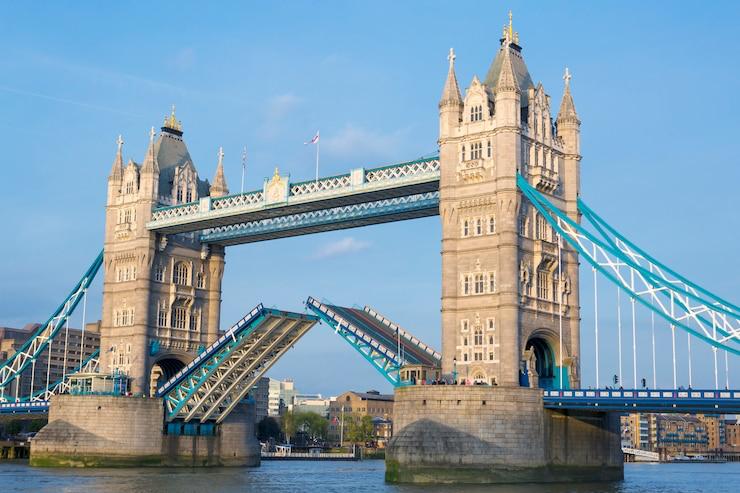
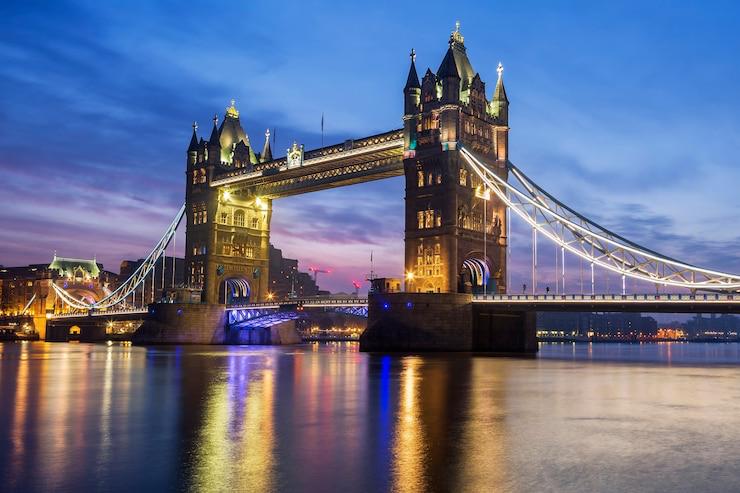
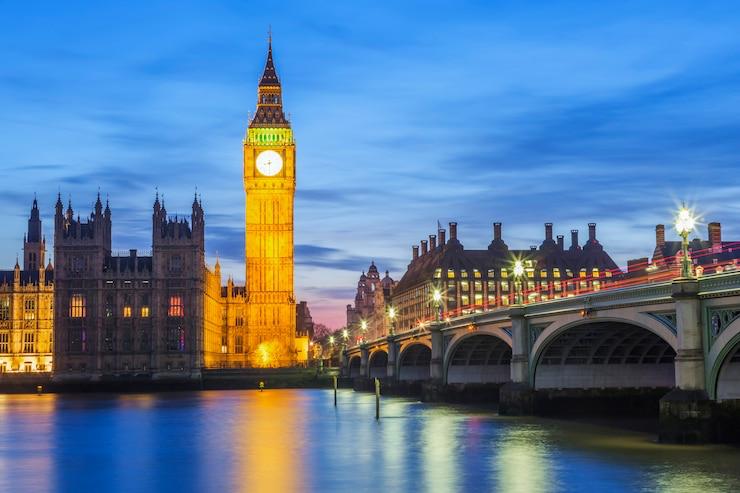
In the dynamic centre of the United Kingdom, London City Most Popular City in the world, centuries-old heritage coexists peacefully with contemporary innovation. With its many different cultures, famous landmarks, and never-ending excitement, it’s more than just a metropolis. Every area of London offers a different experience, whether you’re sipping coffee in a modern glass building or strolling down cobblestone alleyways that were previously walked by monarchs.
London may appear overwhelming at first look due of its size. The skyline is a dynamic blend of modern marvels like The Shard and old structures like Big Ben, which was designed in the gothic style. London City, however, manages to feel intimate despite its vastness. Green parks, walkable neighbourhoods, and welcoming neighbourhood cafes give it a welcoming vibe that attracts both tourists and long-term locals.
The history of the city is among its most captivating features. London has a story to tell everywhere you turn. Stories of royalty, treachery, and tenacity can be found at the Tower of London. Westminster Abbey has seen innumerable coronations and royal weddings, making it more than just a place of worship. There is a feeling of nostalgia and storyline even in the street names, such as Fleet Street, Baker Street, or Oxford Street.
London, however, is not mired in the past. It is a world leader in the arts, business, and finance. Known as the “Square Mile,” the City of London is one of the most significant financial districts in the world. Some of the most influential corporations in the world are housed in tall skyscrapers, while nearby, in neighbourhoods like Soho and Shoreditch, innovative thinkers come together to influence the direction of technology, design, and media.
London City is a foodie’s paradise. The city, which has influences from many continents, has everything from Michelin-starred restaurants to street food vendors offering delectable international cuisine. Traditional fish and chips, fresh sushi, and a Turkish coffee in a quaint East End café might all be included in one afternoon.
The people of London are what really make the city unique. London, which is home to more than 9 million people, is a linguistic, cultural, and lifestyle patchwork. The city’s creative spirit is fuelled by this diversity, which also keeps it evolving over time. You can visit ancient ruins in the morning and go to a cutting-edge tech event in the afternoon at this destination, where tradition and innovation collide every day.
Another feature is transport, which is made simple and even pleasurable by London’s recognisable red double-decker buses and effective Tube system. You can go from the historic grandeur of South Kensington to the vibrant city of Camden in a matter of minutes by taking the Underground.
To put it briefly, London City is an experience rather than just a place to visit. It enthrals, surprises, and lingers in your memory for a long time. There is a different side of London just waiting for you to explore, regardless of your interests—history, cuisine, or culture.
Best Time and Season to Visit London for Tourists :
Spring (March to May) – Best for Pleasant Weather and Blossoms
Spring is one of the most beautiful times to visit London. Parks like Hyde Park and Kew Gardens come alive with blooming flowers, and the weather starts to warm up. Temperatures range from 11°C to 17°C (52°F to 63°F), making it ideal for sightseeing on foot or by boat along the Thames. Tourist crowds are moderate, so you’ll get a great balance of atmosphere and comfort.
Highlights:
- Chelsea Flower Show (May)
- Cherry blossoms in Greenwich Park
- Fewer crowds than summer
Summer (June to August) – Best for Festivals and Outdoor Events
Summer is peak tourist season in London. The days are long, the weather is generally warm (18°C to 25°C / 64°F to 77°F), and the city buzzes with energy. Expect more crowds and higher hotel prices, but also tons of festivals, outdoor cinema, rooftop bars, and street performances.
Highlights:
- Wimbledon Tennis Championships (June/July)
- Notting Hill Carnival (August)
- Open-air theatre at Regent’s Park
Autumn (September to November) – Best for Fewer Crowds and Fall Colors
Autumn brings cooler weather and stunning foliage in the city’s many parks. It’s a quieter time to visit, with fewer tourists and better deals on accommodation. Temperatures range from 9°C to 18°C (48°F to 64°F), and the city feels cozy and relaxed.
Highlights:
- London Film Festival (October)
- Fall colors in St. James’s Park and Hampstead Heath
- Bonfire Night (November 5th)
Winter (December to February) – Best for Holiday Vibes and Indoor Attractions
Though cold (2°C to 8°C / 36°F to 46°F), winter in London is magical—especially during the holiday season. Christmas markets, sparkling lights, and ice skating rinks appear all over the city. While January and February are the quietest (and cheapest) months for tourists, December is full of festive charm.
Highlights:
- Winter Wonderland in Hyde Park
- Christmas lights on Oxford and Regent Streets
- West End theatre shows and cozy pubs
Overall Best Time: Late Spring (May) and Early Fall (September)
These months offer the best mix of good weather, manageable crowds, and vibrant events—perfect for first-time visitors who want to experience the best of London without the summer rush.
Would you like a printable calendar or seasonal travel tips tailored to your itinerary?
2) New York City: Most Popular City
The City That Never Sleeps
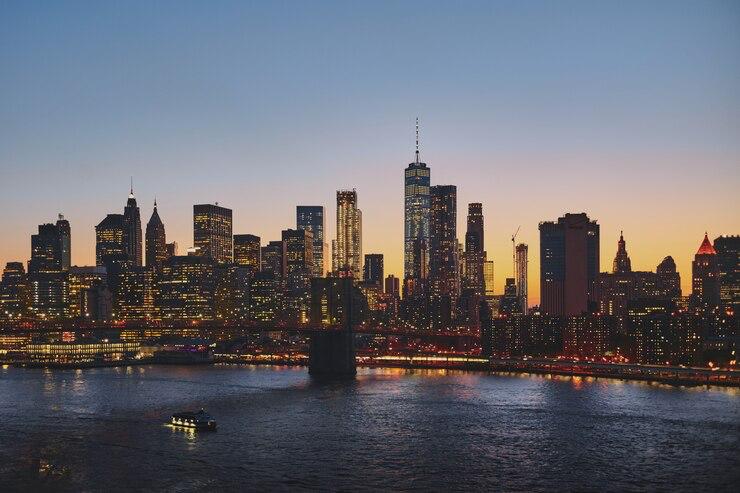
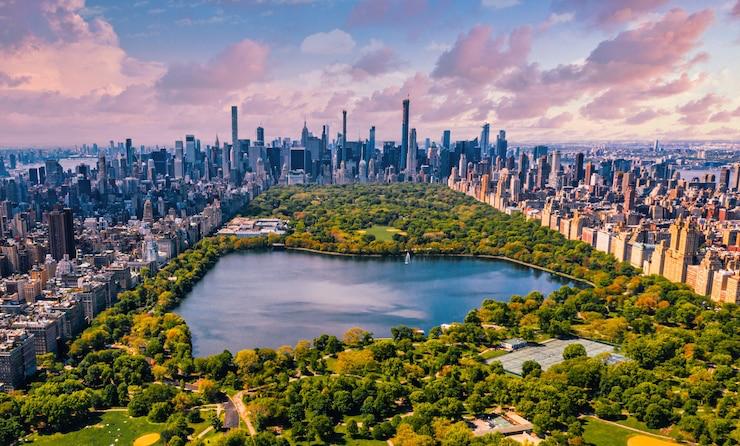
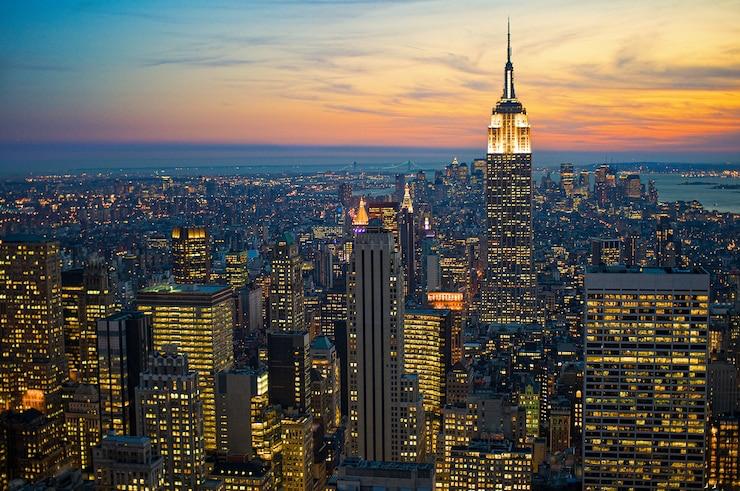
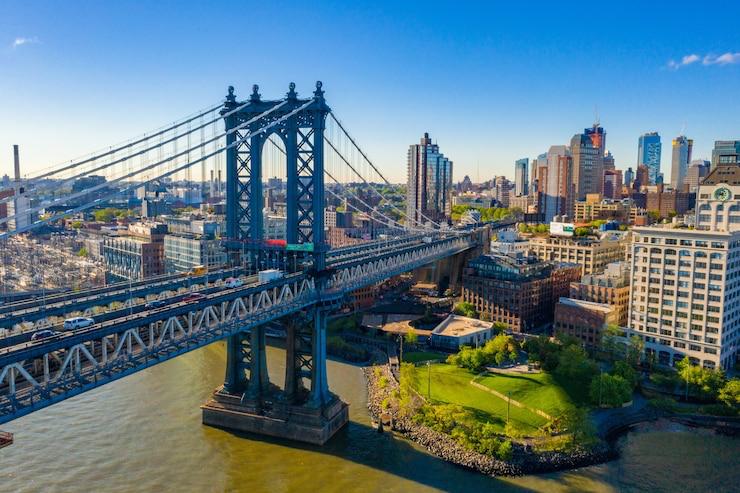
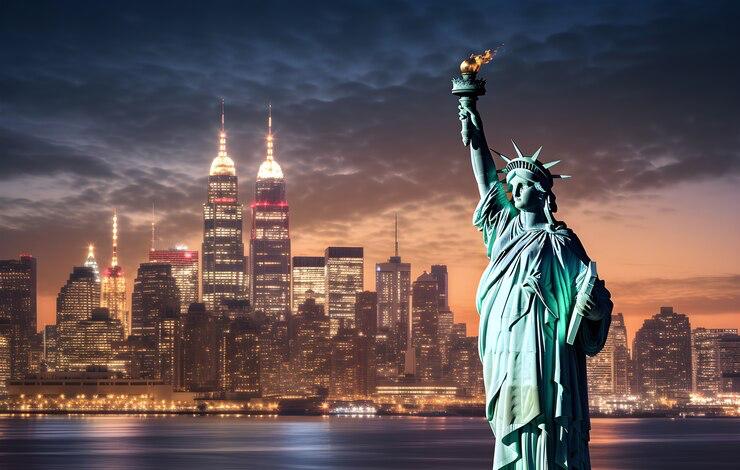
More than just a spot on a map, New York City is a pulse, a beat, and an emotion that envelops you from the moment you step foot there. NYC is one of the most recognisable and significant cities in the world because of its towering skyline, vibrant energy, and diverse population. Every street feels like a scene for a movie, stories are spoken, and ambitions are pursued there.
Manhattan is in the centre of New York, and you can see well-known sites almost wherever you look. You can wander through the tranquilly of Central Park, stare in wonder beneath the Empire State Building, or lose yourself in Times Square’s dazzling lights. Every neighbourhood has a distinct personality; the Financial District is bustling with history and ambition, Harlem is rich in culture and spirit, and SoHo is chic and artistic.
There are millions of stories in New York, not just one. The fact that people from many walks of life call this metropolis home contributes to its allure. You can hear six different languages within a few blocks of where you are. Everything from the cuisine to the dress to the artwork shown on the walls of the tube is influenced by this diversity.
In relation to food, New York is a gourmet haven. There is something here for every taste and price range, whether you’re indulging yourself to a Michelin-starred tasting menu, enjoying handmade dumplings in Chinatown, or grabbing a dollar slice of pizza at two in the morning. A street hot dog for lunch, bagels and lox for breakfast, and maybe a traditional New York cheesecake for dessert.
NYC is a cultural force that extends beyond steel and concrete. World-renowned museums like The Met and MoMA, iconic Broadway theatres, and live music performances of all genres, from arena rock performances at Madison Square Garden to jazz bars in the Village, can all be found there. It is a city that embraces the daring and encourages inventiveness.
However, New York has a more sensitive side as well. Cherry blossoms bloom in the parks in the spring. The trees burst with colour in the autumn. Additionally, the city is transformed into a wonderland during the holidays, attracting tourists from all over the world with its skating rinks, festive lights, and the well-known Rockefeller Centre tree.
It’s part of the journey to get around. The tube is the quickest way to feel like a local, despite the fact that it can be chaotic. Simply swipe your MetroCard and head to the Bronx to see a Yankees game, Queens for real international food, or Brooklyn for a brewery tour.
The excitement of New York is what truly sets it apart. Nobody finds it easier, and it’s not always simple. It pushes, excites, and remains with you long after you’ve left, and that’s the magic. For tourists, the excursion is one they won’t soon forget. It is home to the locals. In any case, New York City makes an impression.
Best Time and Season to Visit New York City
Spring (March to May) – Best for Mild Weather and Blooming Parks
Spring is a great time to visit NYC. As the city shakes off winter, the parks come to life with blooming flowers and warmer temperatures, usually ranging from 10°C to 20°C (50°F to 68°F). It’s an ideal season for outdoor sightseeing, walking tours, and exploring the city on foot without the summer heat or winter chill.
Highlights:
- Cherry blossoms in Central Park and Brooklyn Botanic Garden
- Tribeca Film Festival (April)
- Comfortable weather with moderate crowds
Summer (June to August) – Best for Events and Vibrant City Life
Summer in New York is lively, hot, and full of energy. Daytime temperatures range from 25°C to 32°C (77°F to 90°F), and the city buzzes with outdoor concerts, street fairs, rooftop bars, and cultural festivals. Tourist spots are crowded, but the vibe is electric.
Highlights:
- Free events like Shakespeare in the Park and SummerStage concerts
- 4th of July fireworks over the East River
- Open-air movies, food festivals, and nightlife
Autumn (September to November) – Best Overall Season for Visiting
Fall is often considered the best time to visit New York City. The weather is crisp and cool (around 10°C to 21°C / 50°F to 70°F), the summer crowds start to fade, and the fall foliage paints the parks in beautiful shades of red, orange, and gold. It’s perfect for photographers, walkers, and anyone looking for that classic NYC atmosphere.
Highlights:
- New York Fashion Week (September)
- Beautiful autumn colors in Central Park
- Thanksgiving Day Parade (November)
Winter (December to February) – Best for Holiday Magic and Indoor Activities
If you’re visiting for the holidays, winter in NYC is a must. December is especially magical, with Christmas lights, decorated store windows, ice skating rinks, and festive markets. Temperatures can drop below freezing, but the atmosphere more than makes up for the chill. January and February are quieter and cheaper for travel, though very cold.
Highlights:
- Rockefeller Center Christmas Tree and ice rink
- Holiday markets at Bryant Park and Union Square
- New Year’s Eve in Times Square
Overall Best Times to Visit:
- Late Spring (May to early June) – for great weather and fewer crowds
- Fall (late September to early November) – for ideal weather and beautiful scenery
3) Tokyo: Most Popular City
Where Tradition Meets the Future
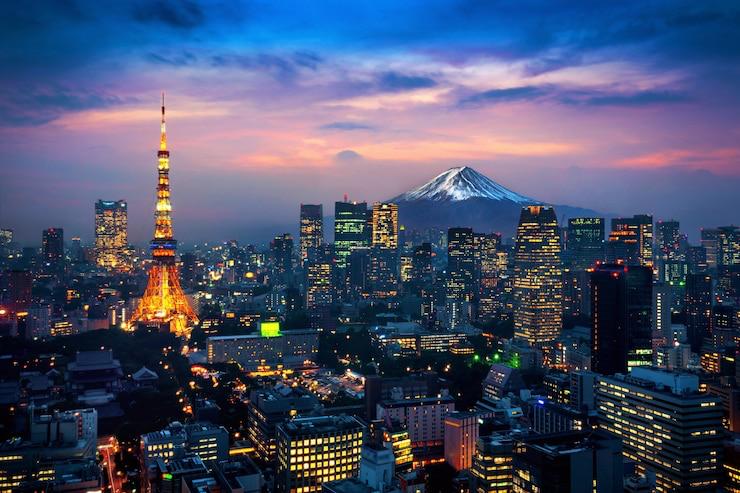
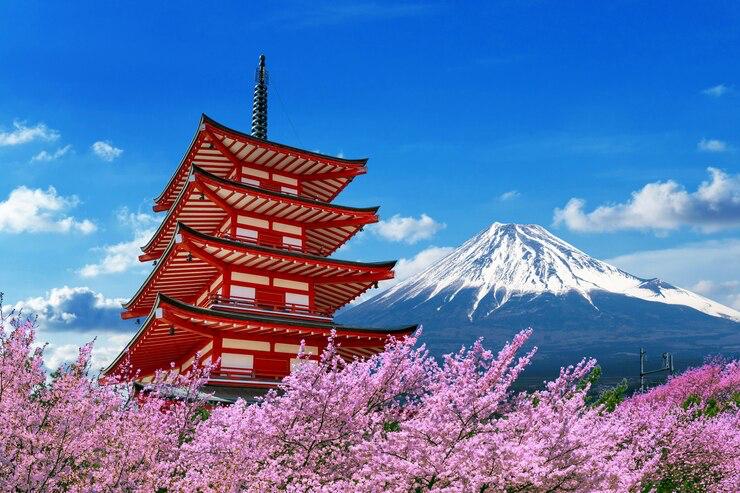
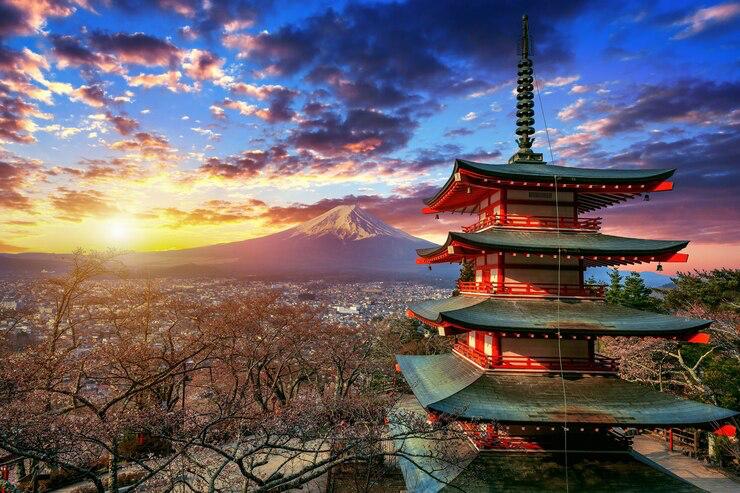
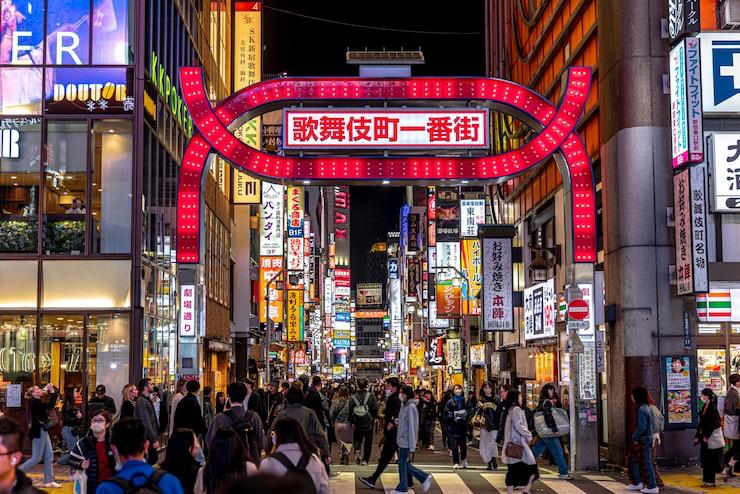
Tokyo is a world unto itself, not just the metropolis of Japan. With its neon lights, high-speed trains, centuries-old temples, and an energy that is as courteous as it is unstoppable, Tokyo is a city where the past and the future coexist. You can buy for the newest technological devices in the afternoon and take part in historic tea traditions in the morning.
The vastness and orderliness of Tokyo are the first things that most tourists notice. It functions flawlessly even though it is one of the world’s most populous cities. Trains are punctual to the last second. The streets are immaculate. There is a serene, even meditative cadence to everything, even as people move with purpose.
Every Tokyo neighbourhood has an own personality. Shibuya is well-known for its renowned scramble crossing, which is a chaotic people wave that manages to pass without colliding. Harajuku is a fashion playground where striking hues and unconventional styles are the main attraction. On the other hand, Asakusa provides a window into bygone Tokyo, where rickshaws, paper lanterns, and the famous Senso-ji Temple are still in use.
The city is a sensory extravaganza. Alleys are filled with beverages and snacks that you may not have known existed thanks to vending machines. From tiny five-seat kiosks to Michelin-starred establishments where every meal is an artistic creation, sushi restaurants come in all shapes and sizes. Beyond sushi, Tokyo’s culinary industry is incredibly inventive, with cafes featuring everything from robot waiters to feline companions, izakayas (Japanese pubs), tempura restaurants, and ramen shops.
Although technology is a part of daily life here, tradition is never overshadowed by it. It’s common to see someone using a phone app to pay for their coffee before going to a shrine to pray and draw a fate slip. Tokyo is unique because of this fusion of the old and the new. You may come across a small wooden house buried beneath tall apartment buildings or a peaceful garden sandwiched between skyscrapers.
Even in this enormous metropolis, nature finds a space. Locals congregate in parks like Ueno and Yoyogi for hanami (flower watching) as the cherry blossoms transform Tokyo into a gentle pink paradise in the spring. The avenues are lined with golden ginkgo leaves in the autumn. Its snow-dusted shrines’ simplicity is beautiful even in the dead of winter.
Another cultural powerhouse is Tokyo. Trends that start here frequently spread throughout the world, whether in the fields of anime, fashion, architecture, or design. Visit museums of future digital art, see a classic kabuki performance, or browse handcrafted trinkets in centuries-old marketplaces.
Tokyo’s balance is what really sets it apart. It’s high-tech but deeply ingrained, dense but organised, and quick but courteous. It calms your soul and stimulates your senses. Tokyo evokes awe and a sense of having merely touched the surface, regardless of how long you spend there—a few days or several months.
Best Time and Season to Visit Tokyo
Spring (March to May) – Most Popular and Beautiful
Spring is arguably the best time to visit Tokyo, especially from late March to early April during cherry blossom (sakura) season. Parks and riversides are covered in soft pink blooms, and the whole city comes alive with picnics and festivals. The weather is mild and pleasant, with temperatures ranging from 10°C to 20°C (50°F to 68°F).
Highlights:
- Cherry blossom viewing (hanami) in Ueno Park, Yoyogi Park, and along the Meguro River
- Sumida Park Cherry Blossom Festival
- Comfortable sightseeing weather and clear skies
Tip: Book flights and accommodation early—this is peak season and can be crowded.
Summer (June to August) – Vibrant but Hot and Humid
Summer in Tokyo is hot, humid, and often rainy, especially in June (the rainy season). July and August bring intense heat, with highs around 30°C+ (86°F+). Still, summer is full of colorful festivals and fireworks, making it worth the trip if you’re prepared for the weather.
Highlights:
- Sumidagawa Fireworks Festival (late July)
- Obon Festival (mid-August)
- Yukata (summer kimono) fashion and traditional street food
Tip: Stay hydrated, use sun protection, and explore indoor attractions during the hottest hours.
Autumn (September to November) – Best for Comfortable Weather and Fall Foliage
Autumn is another ideal time to visit Tokyo. After the summer heat fades, the city cools down and trees burst into shades of red, orange, and gold. With temperatures between 12°C and 22°C (54°F to 72°F), it’s perfect for walking, photography, and exploring.
Highlights:
- Autumn leaves in parks like Rikugien and Shinjuku Gyoen
- Tokyo Ramen Show (late October to early November)
- Fewer crowds compared to spring
Tip: Early November is especially good for combining colorful foliage with outdoor events.
Winter (December to February) – Best for Budget Travel and Illuminations
Winter in Tokyo is chilly but not extreme, with temperatures from 2°C to 10°C (36°F to 50°F). Snow is rare, and skies are usually clear. December is festive with holiday lights and New Year’s traditions, while January and February are quiet, making it a good time for budget travelers.
Highlights:
- Stunning winter illuminations (Roppongi, Shibuya, Marunouchi)
- Japanese New Year traditions at Meiji Shrine
- Fewer tourists and lower prices
Tip: Dress in layers—many indoor places are very warm even in winter.
Overall Best Times to Visit:
- Late March to early April (cherry blossoms)
- Mid-October to late November (autumn foliage and cooler weather)
4) Paris: Most Popular City
A City of Timeless Charm
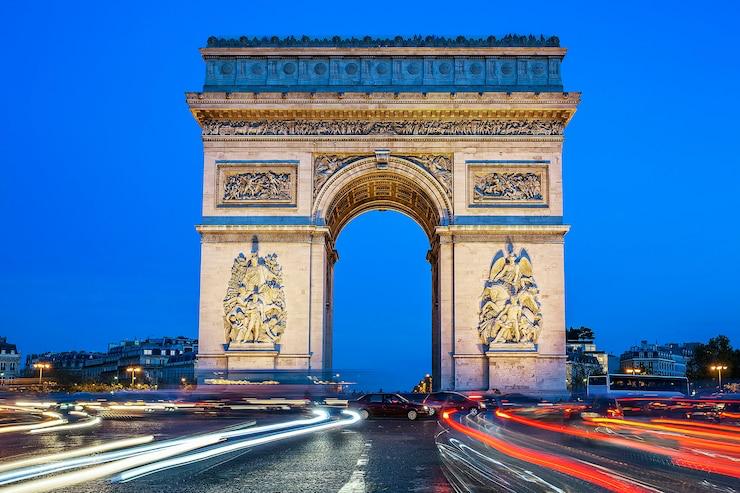
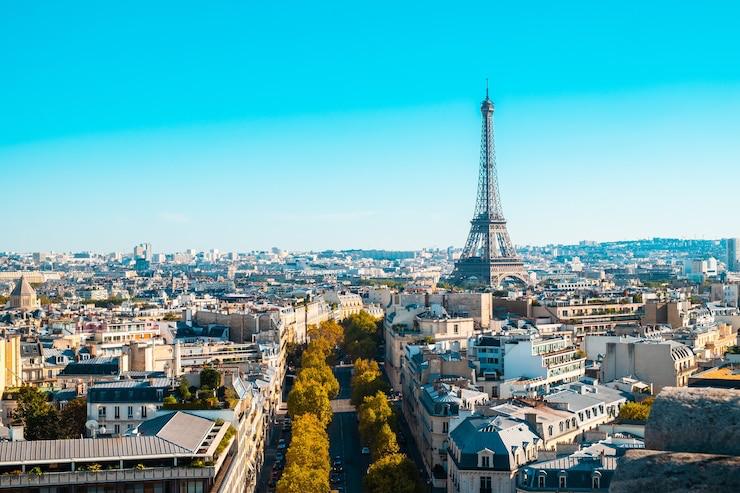

Paris is more than just a place; it’s an emotion. It’s the warm glow of streetlamps along the Seine at night, the peaceful bustle of a café on a rainy morning, and the way the Eiffel Tower catches the last rays of daylight. Paris, also referred to as the “City of Light,” is a location where history, romance, and art all blend together effortlessly.
Paris has a story to tell in every place. The city is a living museum, from the imposing Notre-Dame Cathedral to the Louvre’s magnificent halls. Paris is about more than just grandeur, though; it’s also about the little things in life. A local bakery’s flaky croissant. A walk along the cobbled streets of Montmartre. A peaceful moment near the Luxembourg Gardens’ fountains.
Paris is a place for nomads. You can find beauty everywhere you go; you don’t need a rigid strategy. Street performers, sophisticated boutiques, intimate wine bars, and charming booksellers all contribute to the lively and poetic atmosphere. From the Tuileries Garden’s springtime blooms to the Marais’s golden autumn foliage, the city transforms with the seasons.
Naturally, a major part of the Parisian experience is the cuisine. Paris knows how to make every meal feel exceptional, whether it’s a candlelight supper at a Michelin-starred restaurant or a basic baguette sandwich.
Paris, above all, has a soul. It can be found in its people’s passion, art, architecture, and pace of life. Every trip to this inspiring city feels like a new chapter in your personal tale of love with the world.
Best Time to Visit Paris
Spring (April to June) – Most Popular and Romantic
Paris truly comes alive in spring. Flowers bloom in gardens like Luxembourg and Tuileries, café terraces fill with locals and tourists alike, and the weather is mild and pleasant (around 12°C to 22°C / 54°F to 72°F). It’s the perfect time to explore on foot and enjoy the city’s charm.
Highlights:
- Cherry blossoms around the Eiffel Tower
- Outdoor picnics by the Seine
- Longer daylight for sightseeing
Fall (September to early November) – Best for Fewer Crowds and Beautiful Light
Autumn in Paris is cozy and golden. The weather is still comfortable, and the changing leaves add a warm glow to the city. Attractions are less crowded, and prices tend to drop slightly compared to peak summer months.
Highlights:
- Fall colors in city parks
- Grape harvest festivals (like Montmartre’s Fête des Vendanges)
- Great time for photography
Other Seasons:
- Summer (July & August): Warm and lively, but very crowded and more expensive. Many Parisians leave for vacation, and some small shops close.
- Winter (December to February): Cold and quieter, but magical around the holidays with festive lights, Christmas markets, and fewer tourists.
5) Singapore: Most Popular City
A City of Clean Lines and Cultural Color
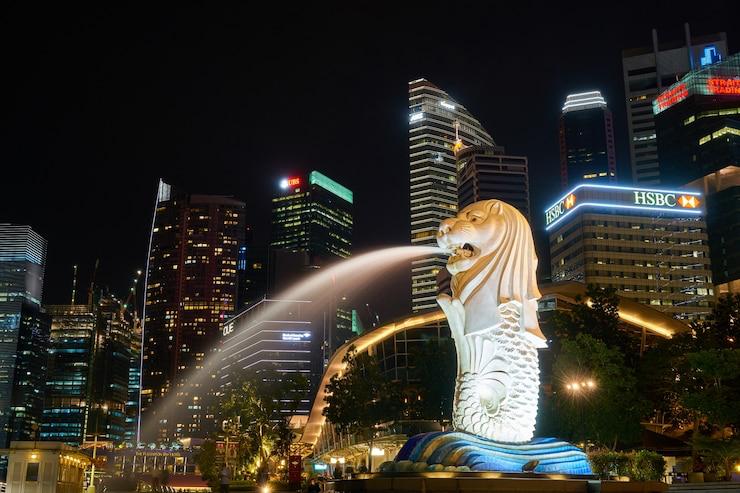
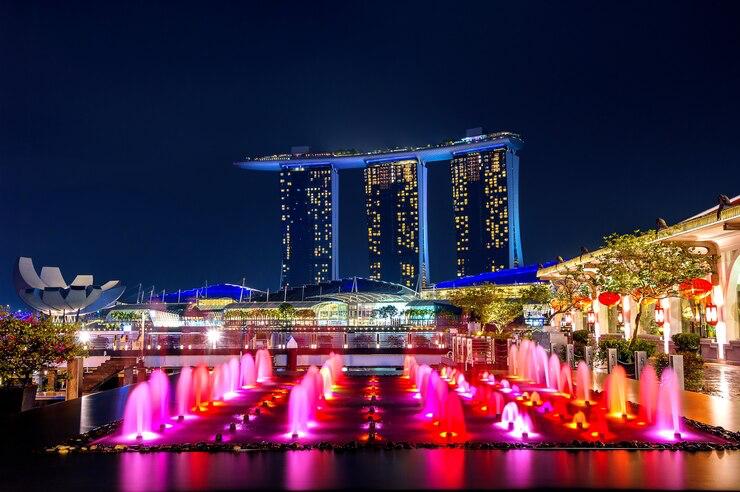

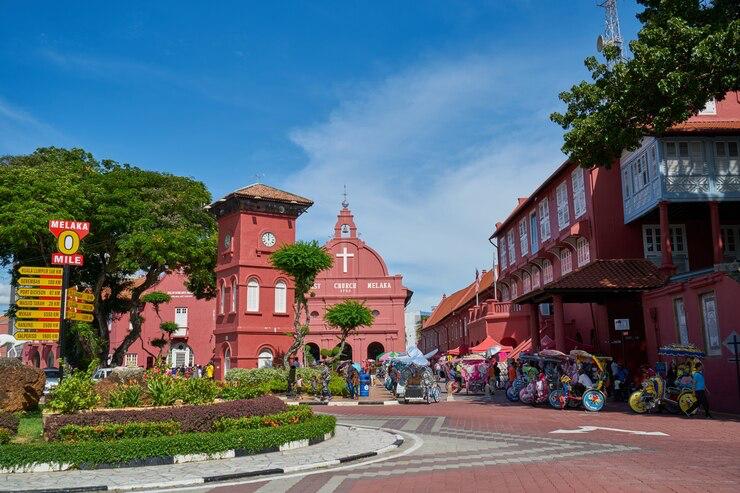
A tiny island city-state with a tremendous personality is Singapore. In addition to being a cultural melting pot where Chinese, Malay, Indian, and Western influences coexist harmoniously, it is well-known for its cleanliness, safety, and futuristic cityscape. You can visit upscale stores, sample top-notch street food, stroll through verdant gardens, and explore busy street markets in a single day—all without ever leaving the city.
Many guests are immediately struck by how well-organised everything seems. Everything just works, the streets are clean, and public transport is quick and immaculate. The city’s core, however, is its rich and varied culture, which lies beneath its glossy exterior. Every neighbourhood has a unique narrative to tell, from the bustling festivals in Little India to the fragrant food stalls of Kampong Glam and the colourful shophouses of Chinatown.
In Singapore, food plays a significant role in daily life. The city is a foodie’s delight, whether they’re enjoying a plate of chicken rice from a hawker centre or an upscale dinner at a rooftop restaurant. Eating out is more of a daily routine than a luxury, and locals are passionate about their cuisine.
In this metropolitan setting, nature is also very much present. With its luminous Supertrees and Cloud Forest, Singapore’s well-known Gardens by the Bay exemplifies how to combine technology with nature. Green buildings and vertical gardens are only two examples of the city’s dedication to sustainability.
Singapore is remains kind and serene despite its fast-paced modern lifestyle. Every visitor, whether they are there for leisure, shopping, or sightseeing, will find something to enjoy in this area where tradition and innovation collide.
Best Time and Season to Visit Singapore
🌤 Best Overall Time: February to April
These months fall just after the monsoon season, making them some of the driest and sunniest of the year. It’s a great window for sightseeing, outdoor attractions, and walking tours without too much disruption from rain.
Why visit now:
- Lower humidity and fewer showers
- Ideal for exploring Gardens by the Bay, Sentosa, or Marina Bay
- Great for outdoor dining and walking tours
🌧 Monsoon Seasons to Be Aware Of:
- Northeast Monsoon (Nov–Jan): Brings heavy rain and thunderstorms, especially in the afternoons.
- Southwest Monsoon (June–Sept): Rain is lighter and more scattered, but humidity remains high.
Despite the rain, the city remains functional—rain showers often come and go quickly, and there’s plenty to do indoors.
🎉 Best Time for Festivals & Events:
- Chinese New Year (Jan/Feb): Streets come alive with lanterns, markets, and performances.
- Hari Raya (May/June): A great time to experience Malay culture and cuisine.
- National Day (August 9): See patriotic parades and fireworks across the city.
- Singapore Grand Prix (September): The world’s only night Formula 1 race, with concerts and parties.
☀️ Year-Round Travel Tips:
- Always carry an umbrella—it can shield you from both sun and sudden showers.
- Lightweight clothing and sunscreen are essential.
- Indoor attractions (malls, museums, restaurants) are well air-conditioned and plentiful.

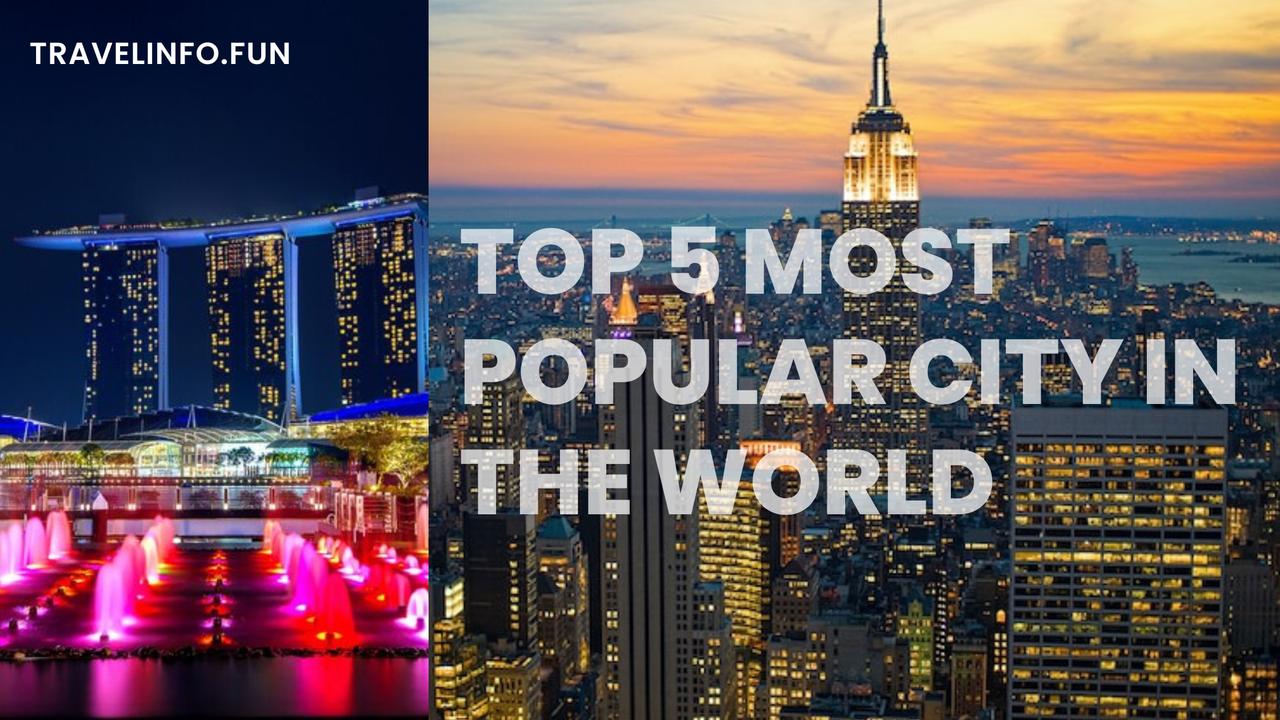
3 thoughts on “Top 5 Most Popular City in the World”